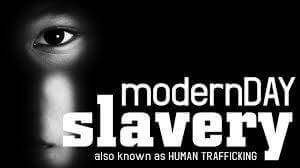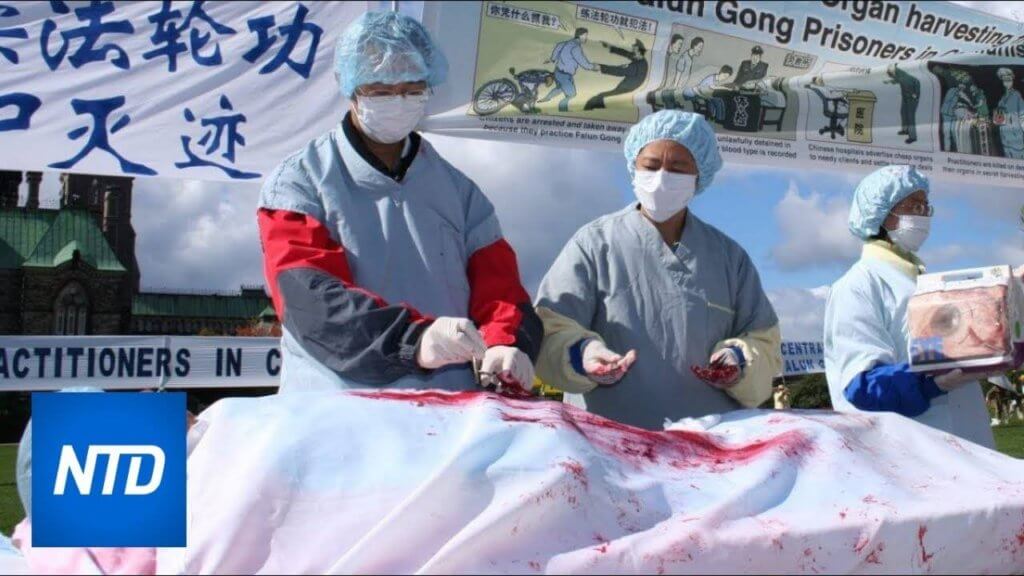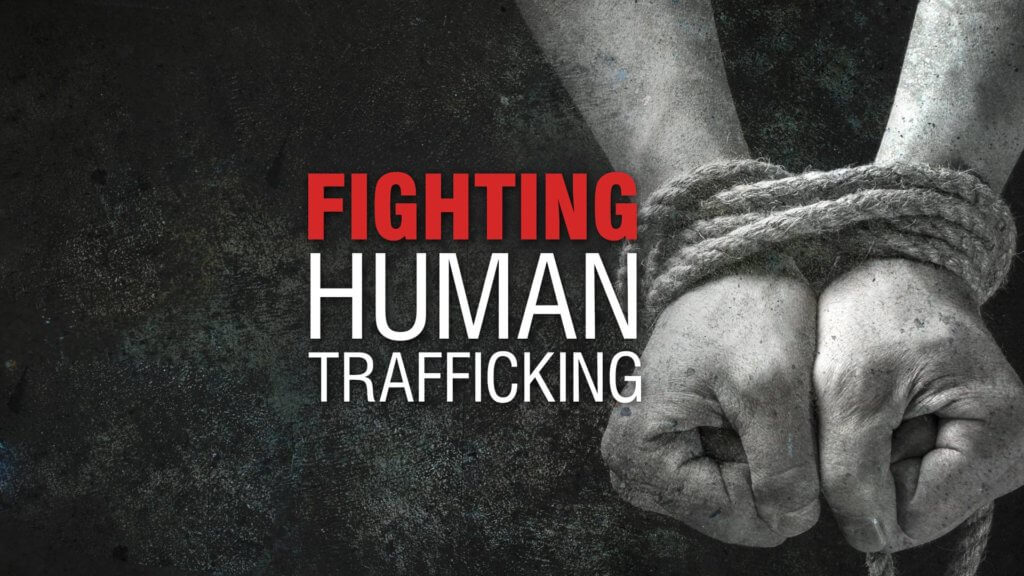
Human trafficking is the act of forcefully transporting or recruiting persons for the purpose of exploitation, which includes prostitution or sexual exploitation, forced labour, slavery, or removal of organs. According to the United Nations Office on Drugs and Crime, human trafficking is defined as “the recruitment, transportation, transfer, harbouring or receipt of persons, means of the threat or use of force”.
Trafficking of individuals is a serious crime and a heinous violation of human rights. “Every year, thousands of men, women and children fall prey to the hands of traffickers, in their own countries abroad. Almost every country in the world is affected by trafficking, whether as a country of origin, transit or destination for victims,” said the UN.

Although one case may differ from another, most human trafficking cases follow the same pattern, according to a report of the United Nations Office on Drugs and Crime (UNODC): people are abducted or recruited in a country of origin; transferred through transit regions; and then exploited in a destination country.
There are 3 elements that constitute human trafficking: the criminal act of recruitment, transportation, transfer, harboring, or receipt of persons within or across national borders by means of threat or use of force, coercion, abduction, fraud, deception, abuse of power or vulnerability, or giving payments or benefits to a person in control of the victim:
- The UNODC cites 3 elements that constitute human trafficking: for the purpose of exploitation, which includes, at a minimum, exploiting the prostitution of others, other forms of sexual exploitation, forced labour or services, slavery or similar practices, and the removal of organs.
- Different Types of Human Trafficking. Approximately 60% percent of the victims are forced into sexual exploitation.
- Different Types of Human Trafficking. “Sex trafficking is the recruitment, transportation, or harbouring of persons through threat, use of force, or other coercion for the purpose of sexual exploitation. This includes movement across borders, as well as within the victim’s own country.
Check Also: Satellite Tracking Systems for Child Recovery Services
Involuntary servitude happens when a domestic worker becomes enslaved in an exploitative position they are incapable of escaping.
- Domestic servitude is the seemingly normal practice of live-in help that is used as a cover for the exploitation and control of someone, usually from another country. It is a form of forced labor, but it also warrants its own category of slavery because of the unique contexts and challenges.
- “Forced labor is work or service that is extorted from someone under the menace of any penalty and work or service that the person has not offered voluntarily.” The International Labour Organization estimated that approximately 20.9 million people are enslaved to forced labor, and 4.5 are subjected to sexual forced exploitation.
- “Debt bondage is a type of forced labor, involving a debt that cannot be paid off in a reasonable time. It is a period of debt during which there is no freedom, consequently, it is also known as debt slavery.
- Child soldiers are described as persons under the age of 18, who have been recruited by armed forces in any capacity. Currently, there are thousands of soldiers worldwide. The definition includes both boys and girls who are used as fighters, cooks, porters, messengers, spies, or for sexual purposes.
- There are approximately 1.8 million children subjected to prostitution or pornography globally. It as a sexual exploitation by an adult with respect to a child, usually accompanied by a payment to the child or one or more third parties.”
- A child is considered to be involved in child labor activities if this minor is between the ages of 0 and 18, is involved in a type of work inappropriate for their age and in a dangerous work environment.
- However, there are several forms of child labor. The most common ones are related to the informal sector of the economy and are linked to agricultural labor, mining, construction and begging in the streets.

- Organ harvesting involves trafficking people in order to use their internal organs for transplant. The illegal trade is dominated by demand for kidneys. These are the only major organs that can be wholly transplanted with relatively few risks to the life of the donor.
- Promised a “better life” ◦ “Help” immigrating ◦ Fake jobs ◦ No negative aspects ◦ Kidnapped ◦ Beaten ◦ Raped
- Rarely fed, washed, no medical attention: Beaten, raped, drugged. Passports confiscated.
- Section 4 of Republic Act 9208, otherwise known as the “Anti-Trafficking in Persons Act of 2003”, deems it unlawful for any person, natural or juridical, to commit any of the following acts: (a) To recruit, transport, transfer, harbor, provide, or receive a person by any means, including those done under the pretext of domestic or overseas employment or training or apprenticeship, for the purpose of prostitution, pornography, sexual exploitation, forced labor, slavery, involuntary servitude or debt bondage.
- To introduce or match for money, profit, or material, economic or other consideration, any person or, as provided for under Republic Act No. 6955, any Filipino women to a foreign national, for marriage for the purpose of acquiring, buying, offering, selling or trading him/her to engage in prostitution, pornography, sexual exploitation, forced labor, slavery, involuntary servitude or debt bondage.
- To offer or contract marriage, real or simulated, for the purpose of acquiring, buying, offering, selling, or trading them to engage in prostitution, pornography, sexual exploitation, forced labor or slavery, involuntary servitude or debt bondage.
- To undertake or organize tours and travel plans consisting of tourism packages or activities for the purpose of utilizing and offering persons for prostitution, pornography or sexual exploitation; (e) To maintain or hire a person to engage in prostitution or pornography.
- To adopt or facilitate the adoption of persons for the purpose of prostitution, pornography, sexual exploitation, forced labour, slavery, involuntary servitude or debt bondage.
- To recruit, hire, adopt, transport or abduct a person, using threat or use of force, fraud deceit, violence, coercion, or intimidation for removal or sale of organs of said person; and (h) To recruit, transport or adopt a child to engage in armed activities in the Philippines or abroad.
- REPUBLIC ACT No. 10364. The act shall be known as the “Expanded Anti-Trafficking in Persons Act of 2012” An act to institute policies to eliminate trafficking in persons especially women and children, establishing the necessary institutional mechanisms for the protection and support of trafficked persons, providing penalties for its violations and for other purposes.
- Philippines is a source, transit, and destination for human trafficking. u20,000 – 100,000 Philippine and foreign child victims in the Philippines. Foreign tourists, particularly other Asians, sexually exploit women and children.
- Philippine men, women, and girls were trafficked for labour and sexual exploitation to Saudi Arabia, Kuwait, the United Arab Emirates, Qatar, Bahrain, Malaysia, Hong Kong, Singapore, Japan, South Africa, North America, and Europe.
- 300,000 – 400,000 trafficked women Ø60,000 – 100, 000 trafficked children
- The Philippines is a transit country for victims trafficked from China. The Philippines is a destination country for a small number of women who are trafficked from the People’s Republic of China (P.R.C.), South Korea, Japan, and Russia for sexual exploitation.
- The Philippines has internal trafficking of women and children from rural areas, particularly the Visayas and Mindanao, to urban areas, such as Metro Manila and Cebu, for sexual exploitation or forced labour as domestic workers, factory workers, or in the drug trade.

Child Recovery International is the only private-sector law enforcement agency in the United States. We combat Human Trafficking, Sex Trafficking, Runaways, Kidnapping and even Organ Harvesting. We do not5 post flyers but rather put boots on the ground after a thorough investigation and intelligence gathering using Analytical thought, proprietary methodologies, profiling and criminal science behavior. We use geo-targeting and satellite technology. Our skills are exact and our success rates for Child Recovery are extremely high. We save lives. www.thelost.net or call 845-270-7777 to report your missing at-risk and endangered child now!

